Pushkar Lake
The crown jewel of Rajasthan’s heritage
- Morning rituals on Pushkar Lake
Not many lakes can claim to have witnessed over two millennia of human history, but Pushkar Lake in western India has done exactly that.
Since the 4th century BC, this remarkable body of water has been a cornerstone of Hindu spirituality. The lake’s shoreline, adorned with 52 bathing ghats and encircled by more than 500 Hindu temples, continues to be one of India’s most revered pilgrimage destinations.
The geographical setting
Situated in the Ajmer district of Rajasthan, Pushkar Lake rests amongst the ancient Aravalli hills. The artificial lake came into being through the construction of a dam, with desert and hills creating natural boundaries on three sides.
The climate plays a crucial role in shaping the lake’s ecosystem, with temperatures soaring to 45°C in summer and dipping to 10°C in winter.
Historical significance through the ages
The history of this sacred lake stretches back centuries, with evidence found on Greek and Kushan coins from the 4th century BC. Throughout history, various rulers have contributed to its development. During the Mughal period, Emperor Akbar promoted both Hindu and Muslim sacred sites in the region, while Rajput rulers from Amber, Bundi, Bikaner, and Jaisalmer worked to restore the lake’s prominence.
Religious importance and mythology
The lake holds deep religious significance in Hindu culture. According to Hindu scripture, the lake emerged when Lord Brahma dropped lotus petals from his hand. This action created three lakes:
Pushkar Lake (Jyeshta Pushkar), Madya Pushkar Lake, and Kanishta Pushkar lake. The main Pushkar Lake is considered one of the five most sacred pilgrimage sites for Hindus.
Environmental challenges
Recent times have brought significant challenges to Pushkar Lake.
Tourism growth and environmental pressures have impacted the water quality and reduced water levels. The fish population has declined substantially, with the lake depth shrinking to less than 1.5 metres from its original 9 metres.
To address these environmental concerns, various conservation initiatives are underway. The government has implemented several measures including:
- De-silting operations
- Water treatment programs
- De-weeding activities
- Afforestation projects
- Community awareness campaigns
Modern-day significance
Today, Pushkar Lake continues to hold its position as a significant pilgrimage site. The annual Pushkar Camel Fair, held during Kartik Poornima (October-November), draws large crowds to the sacred waters. People believe a holy dip in the lake cleanses sins and helps cure skin ailments.
Summary
Pushkar Lake represents a unique blend of historical significance, religious importance, and environmental challenges. While facing modern pressures, this sacred lake continues to maintain its cultural significance through active conservation efforts and enduring spiritual beliefs.
I had come to Pushkar with local friend Tarun Gaur from My Greedy Backpack and his wife who were very graciously showing me some of his India. We had driven up from Delhi, stooping for lunch along the way and now, having checked in to our hotel, we were taking in some of the local sights.
And let me tell you, sitting here, at this holy place and watching the sun set with friends, was the perfect way to end a busy day.

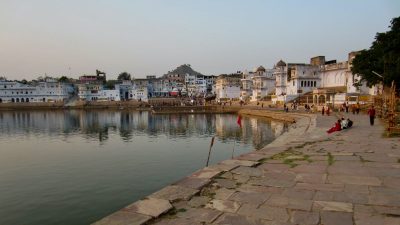
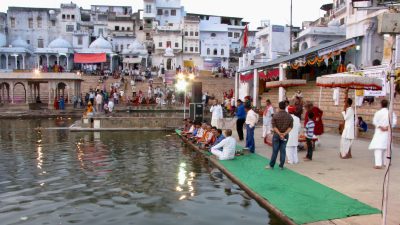

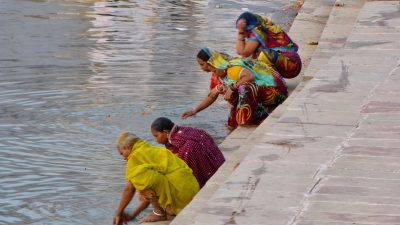
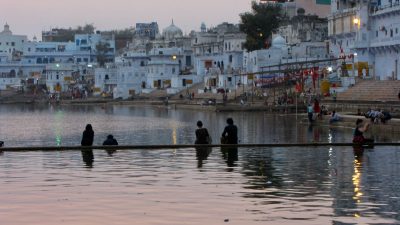
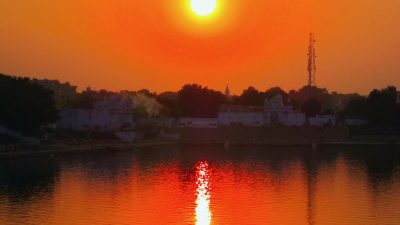

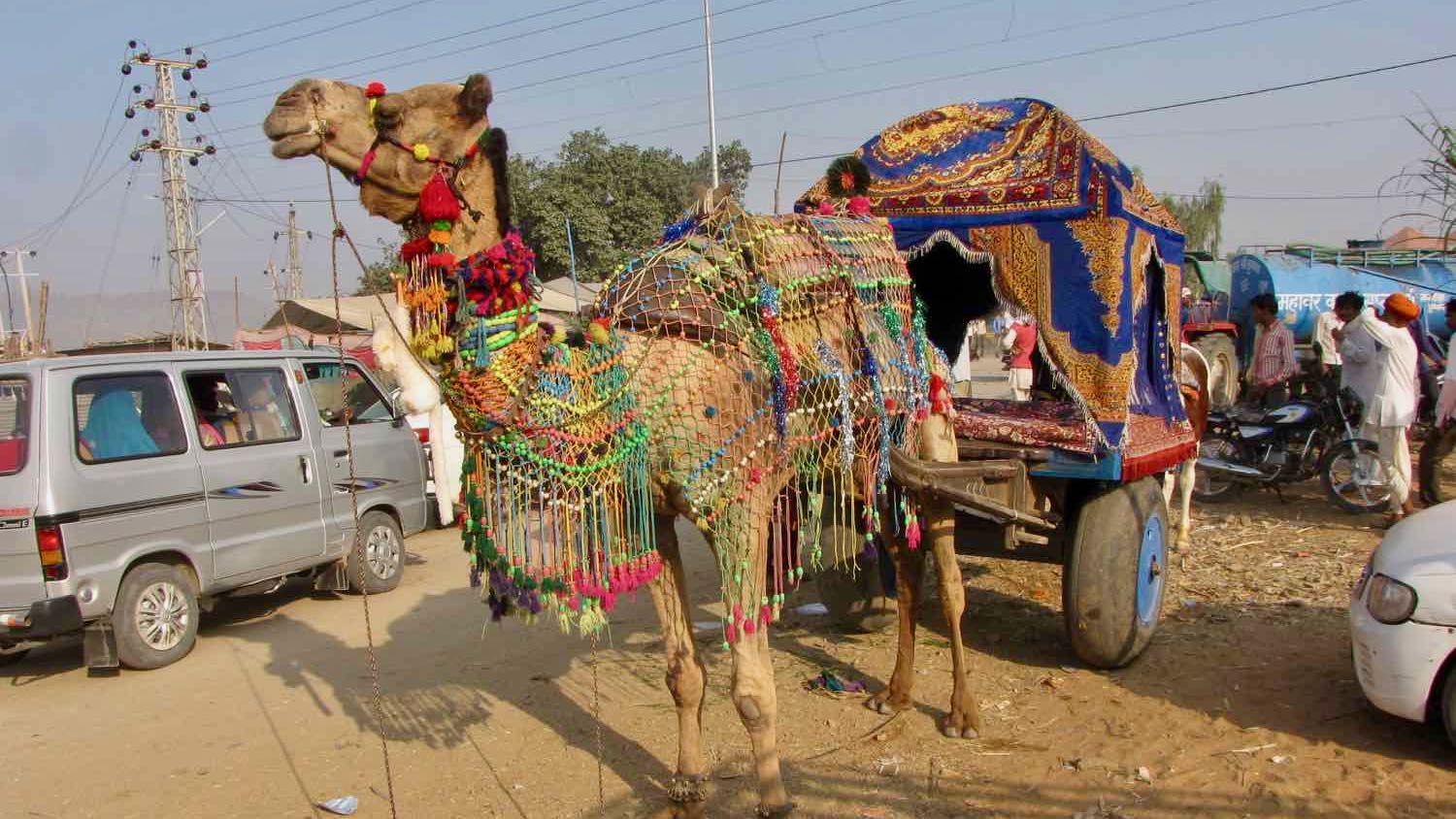

Good place to sit and relax the place is walk by dustance from brahma temple and easy to reach must visit if you visit pushkar
Enjoy a lot we seen all pushkar by walk also seen bramha temple we also do puja at pushkar lake highly recommended
The archeological dating of the lake measures that the lake existed even in the 4th century BC. In later periods it was referred to in many sources- from the inscriptions at Sanchi to records of Chinese Traveler Fa Xian. Over the period, many Rajput rulers and local chiefs of Ajmer tried to restore the glory of Pushkar. The lake lost significance only during the brief period of Mughal rule except during the reign of Akbar.
Fabulous sunsets and great for watching local life. The terrace at Pushkar Palace is the place to sit for optimum viewing!